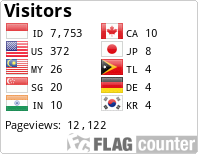SKRINING Human Immunodeficiency Virus (HIV) PADA IBU HAMIL TRIMESTER II DI PUSKESMAS WILAYAH KABUPATEN KONAWE UTARA
DOI:
https://doi.org/10.46356/jakk.v4i1.171Keywords:
HIV, Ibu hamil Trimester IIAbstract
ABSTRAK
Human Immunodeficiency Virus (HIV) adalah virus yang menyebabkan AIDS yang termasuk dalam kelompok
retrovirus. AIDS adalah Acquired Immune Deficiency Syndrome. “Acquired” artinya tidak diturunkan, tetapi
didapat; “Immune” adalah sistem daya tangkap atau kekebalan tubuh terhdap penyakit; “Deficiency” artinya tidak
cukup atau kurang dan “Syndrome” adalah kumpulan tanda dan gejala penyakit. Lebih dari 90% anak terinfeksi
HIV didapat dari ibunya. Virus dapat ditularkan dari ibu yang terinfeksi HIV kepada anaknya selama hamil, saat
persalinan dan menyusui, HIV tidak ditularkan melalui bersalaman, berpelukan, bersentuhan atau berciuman,
penggunaan toilet umum, kolam renang, alat makan atau minum secara bersama, ataupun gigitan serangga seperti
nyamuk. Penelitian ini bertujuan untuk mengetahui hasil skrining HIV pada ibu hamil trimester II di puskesmas Kab
Konawe Utara. Jenis penelitian ini adalah Observasional analitik dengan teknik pengambilan sampel bersifat
accidental sampling, dengan jumlah sampel sebanyak 43 orang. Metode pemeriksaan yang digunakan adalah ICT (immunokromatografi)Rapid test/strip. Berdasarkan hasil penelitian yang telah dilakukan dapat disimpulkan bahwa dari 43 pasien ibu hamil trimester II di puskesmas wilayah Kabupaten Konawe Utara yang telah dilakukan pemeriksaan Human Immunodeficiency Virus (HIV), didapatkan hasil negatif yaitu sebanyak 43 orang (100%).
Kata kunci : HIV, Ibu hamil Trimester II
ABSTRACT
Human Immunodeficiency Virus (HIV) is the virus that causes AIDS which is included in the retrovirus group.
AIDS is from Acquired Immune Deficiency Syndrome. "Acquired" means not derived, but obtained; "Immune" is a
system of capture or immunity against disease; "Deficiency" means not enough or less and "Syndrome" is a
collection of signs and symptoms of the disease. More than 90% of children infected with HIV are from their
mothers. Viruses can be transmitted from HIV-infected mothers to their children during pregnancy, during labor and
breastfeeding. Without proper and early treatment. It should be noted that, HIV is not transmitted through shaking
hands, hugging, touching or kissing, using public toilets, swimming pools, eating utensils or drinking together, or
insect bites such as mosquitoes. This study aims to determine the results of HIV screening in second trimester
pregnant women in North Konawe Kab. This type of research is analytic observational with the sampling technique
is accidental sampling, with a total sample of 43 people The examination method used is ICT (immunochromato
graphy) Rapid test / strip. Based on the results of the research that has been done, it can be concluded that of 43
patients in the second trimester of pregnant women in the health center of North Konawe District who had been
examined by Human Immunodeficiency Virus (HIV), negative results were obtained, namely 43 people (100%).
Keywords : HIV, Trimester pregnant women
Downloads
Published
Issue
Section
License
Authors who publish on JAKK can share their research in a number of ways. JAKK does not impose an embargo on published journals, meaning that researchers can access it openly after the article is published. Researchers who have subscribed to access to articles can also share.
JAKK already uses the Open Journal System (OJS) thereby enabling the final version of all published research articles to be placed in any digital archive immediately after publication. JAKK can automatically make feeds of open access articles available to any repository that wishes to receive them.
Authors who publish with this journal agree to the following terms:
* Authors retain copyright and grant the journal right of first publication, with licensed under a Creative Commons Attribution ShareAlike 4.0 International License (CC BY-SA 4.0) that allows others to share the work with an acknowledgement of the work's authorship and initial publication in this journal.
* Authors are able to enter into separate, additional contractual arrangements for the non-exclusive distribution of the journal's published version of the work (e.g., post it to an institutional repository or publish it in a book), with an acknowledgement of its initial publication in this journal.
* Authors are permitted and encouraged to post their work online (e.g., in institutional repositories or on their website) prior to and during the submission process, as it can lead to productive exchanges, as well as earlier and greater citation of published work.







2.jpg)

